If you buy through our links, we may earn an affiliate commission. This supports our mission to get more people active and outside.Learn about Outside Online's affiliate link policy
The Best Beginner Triathlon Bikes of 2025
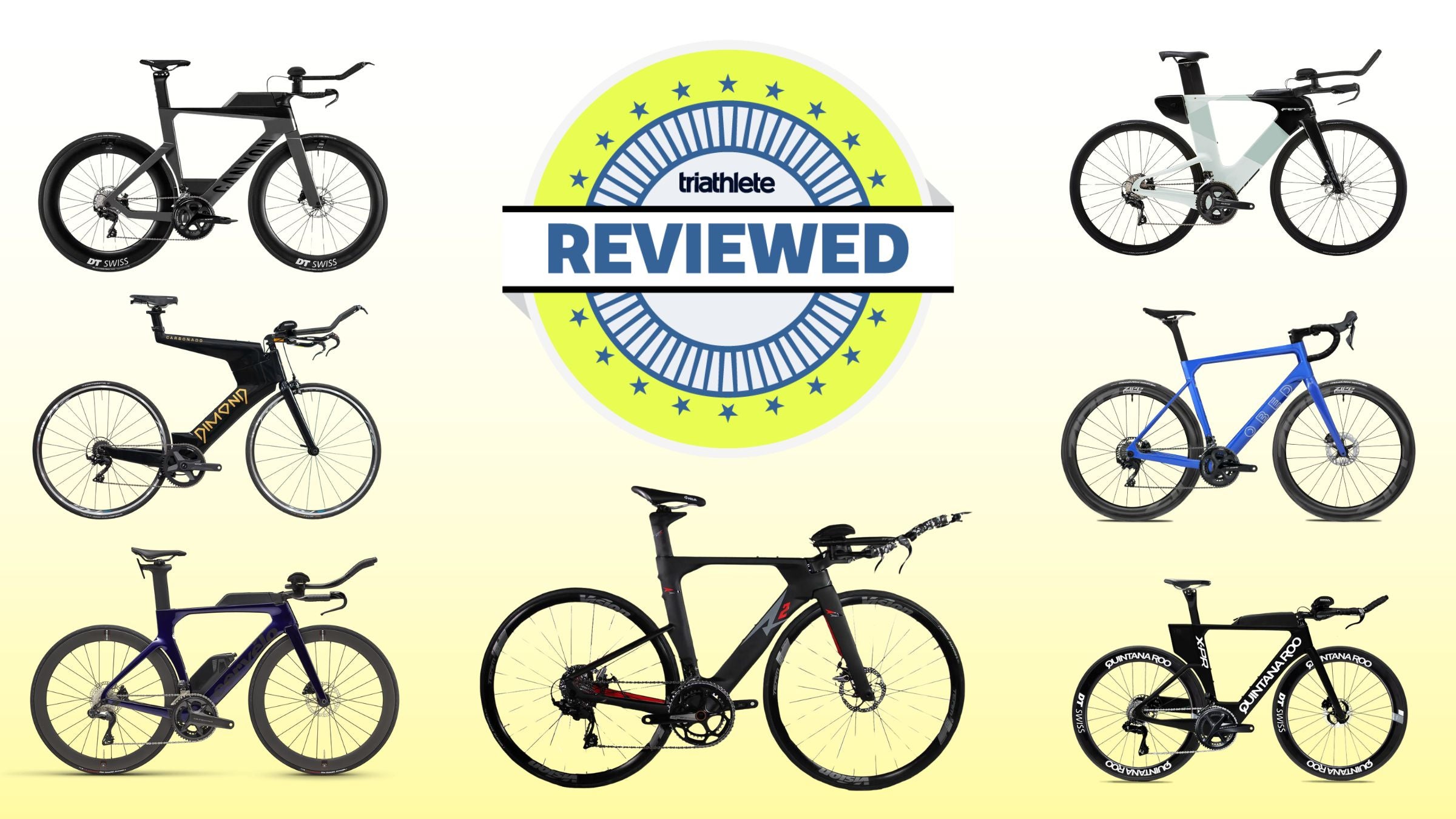
Roll out with one of the best beginner triathlon bikes of 2025. (Photo: Triathlete)
Best Beginner Triathlon Bikes
One of the first big considerations you’ll have to make as a triathlete is what bike you should ride. Any bike is better than no bike, so if you have an old eight-speed, or if a friend can loan a test ride, great! If you are in the market for a new bike, however, use these guidelines to find the right rig and avoid making a very expensive mistake. Then, enjoy our picks for the best beginner triathlon bikes of 2025.
Get a fit before you buy a beginner triathlon bike
The biggest faux pas many new triathletes make is shopping for a new bike without getting properly fit. An uncomfortable bike limits performance and enjoyment of the sport (at the very least), and worse, may lead to injury. The best triathlon bike fitters use a dynamic fit bike to get the right geometry from scratch, but even a fitter who works with different models and sizes is better than nothing at all. Online fit calculators and formulas are far from perfect and can easily lead you in the wrong direction. Check the fitter database on ibfi-certification.com, or ask around for a recommendation of some fitters in your area.
Best beginner triathlon bike: Road or tri?
It’s the question every new triathlete has: What’s the difference between a road bike and a triathlon bike, and which one should I ride? Many new triathletes are best served with road bikes rather than triathlon bikes. Road bikes are versatile and well suited for just about anything. Triathlon bikes can be tricky to handle to new riders; they are made for going fast in a straight line and are not ideal for group riding or easy endurance rides. Every triathlete should own a road bike, but not every triathlete should own a tri bike. Scroll down for one of our favorite road bike picks that won’t break the bank.
Best beginner triathlon bike: Aluminum or carbon?
Bike frame material makes a difference in the way a bike feels. Aluminum rigs can be just as light as carbon, but aluminum tends to ride harsher – but it’s also much more durable. Your budget will likely dictate whether your starter bike will be carbon. Even if you can’t afford a carbon frame, you can dramatically improve ride quality on any bike by outfitting it with high-quality tires and keeping them inflated to the appropriate pressure.
Beginner triathlon bike must-haves:
Adjustable fit
Your bike fit needs will likely change as you progress in the sport. All bikes allow you to adjust fit parameters, but some rigs can be limiting or really challenging to adjust. Before you buy, ask your bike shop pro how hard it will be to move the position of the handlebar or aerobars. Some bikes are very easy to adjust, but others require a mechanic to make even small tweaks.
Components
Most companies offer bikes at various price points with different component packages. When considering which bike is the best value for your dollar, look closely at the rig’s components. Some manufacturers mix and match some parts, and what they may be offering as Shimano Ultegra or SRAM Force groupset may not be 100% as advertised. Groupsets work best with 100% native parts, so look closely to understand exactly what you are getting. That said, if your budget is super tight a mix-and-match solution isn’t the end of the world, just keep in mind that you might want to upgrade some parts in the near future for better performance/better durability.
Disc brakes
Disc brakes are all the rage these days, and rightfully so. They give riders better control in all conditions and are far less troublesome than rim brakes. Disc brakes make swapping between wheelsets slightly easier as well, so if you are going to be purchasing a set of race wheels in the future, disc brakes will simplify your life.
Generally, disc brakes cost about the same as rim brakes, and disc-brake wheels are becoming cheaper and cheaper. The only caveat with hydraulic disc brakes (which are different than budget-focused cable disc brakes) is that they can be very difficult to service outside of a bike shop situation. If you like to tinker with your bike and perform your own maintenance, using disc brakes can add quite a few steps to your routine – or take you out of the DIY zone completely.
Why you shouldn’t test ride when shopping for a beginner triathlon bike
This may seem counter-intuitive, but test rides can be incredibly misleading. There are many factors that influence the way a bike feels in a test ride (poor fit, uncomfortable saddle, etc.). Unless a shop is willing to adjust a few bikes exactly to your fit specs and then plop on a saddle of your comfort choice, the test ride will likely be a waste of time and possibly leave you with an inaccurate impression. Specs and the approval of a proper size from a trusted fitter are far more important.
The best beginner triathlon bikes 2025
What makes our reviews different? Our testers actually use the thing. A lot. Learn more about Triathlete’s gear review process here.
Felt IAx
Quick spec highlights: Full Shimano 105 12-speed, hydraulic disc brakes
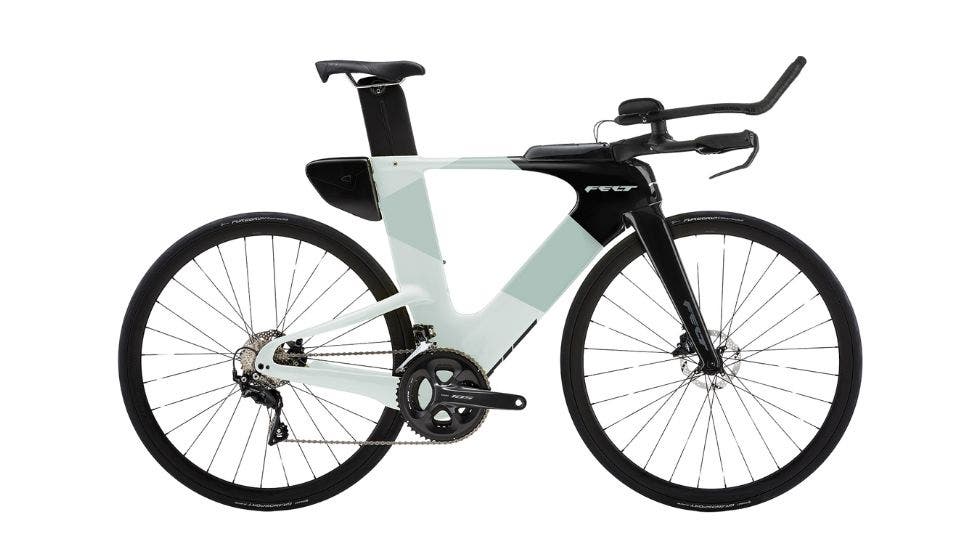
It’s been a long time since Felt updated its incredibly long-in-the-tooth budget “B-series” bikes, and the trickle-down tech in the new sub-$4,000 Felt IAx is worth the wait – hence why we dubbed the Felt IAx the best budget tri bike of 2024 in our year-end awards. The IAx features deep aero sections across all tubes and an impressive no-corners-cut Shimano 105 12-speed build with hydraulic disc brakes (meaning lots of space for further affordable upgrades).
We loved the stable ride on the IAx – even on big descents with crosswinds in the aerobars – and while neither cornering nor acceleration are highlights on the 23-pound (size 56cm) build, they’re worthy sacrifices for a bike that’s cut out for even the longest tris. Plus, the build and integrated storage (no integrated hydration, however) mean there’s tons of upgrade potential for not much more cash.
Read our full Felt IAx review here.
Canyon Speedmax CF 7
Quick spec highlights: Full Shimano 105 11-speed, hydraulic disc brake, 4iiii Precision power meter, carbon Reynolds AR 58/62 wheels
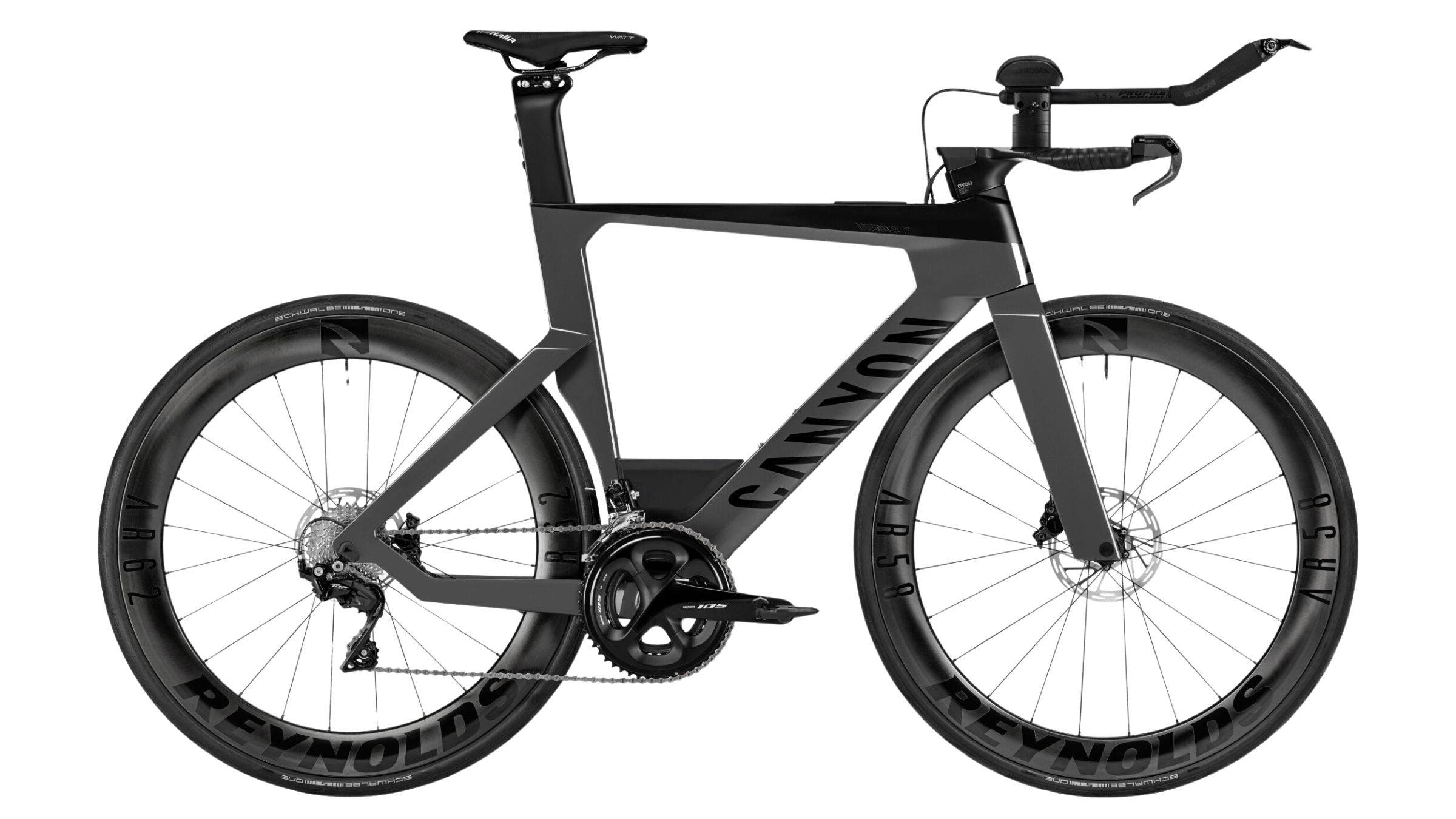
Canyon’s “low-end model” is a favorite for a few reasons – trickle-down aerodynamics from Canyon’s previous high-end bikes (that earned multiple Ironman world championships), a solid hydraulic-brake build with complete 11-speed mechanical Shimano 105, tri details like a built-in bento box on the top tube for nutrition storage, a built-in toolbox above the bottom bracket, a bevy of included fit options, and a set of fully race-ready, tubeless-compatible carbon Reynolds AR 58/62 wheels.
Sadly, Canyon substantially raised the price on the latest version of the CF 7 from $4,200 to $5,200, but it’s worth noting that it’s one of two bikes on our list that includes a very-necessary built-in power meter – though pure beginners may find a power meter excessive. It’s also worth noting that while the CF 7 does include a very large built-in top-tube bento box (and toolbox), Canyon’s own aero-optimized between-the-arms hydration system is not included and must be purchased separately.
Quintana Roo X-PR
Quick spec highlights: Full Shimano Ultegra 11-speed, mechanical disc brakes
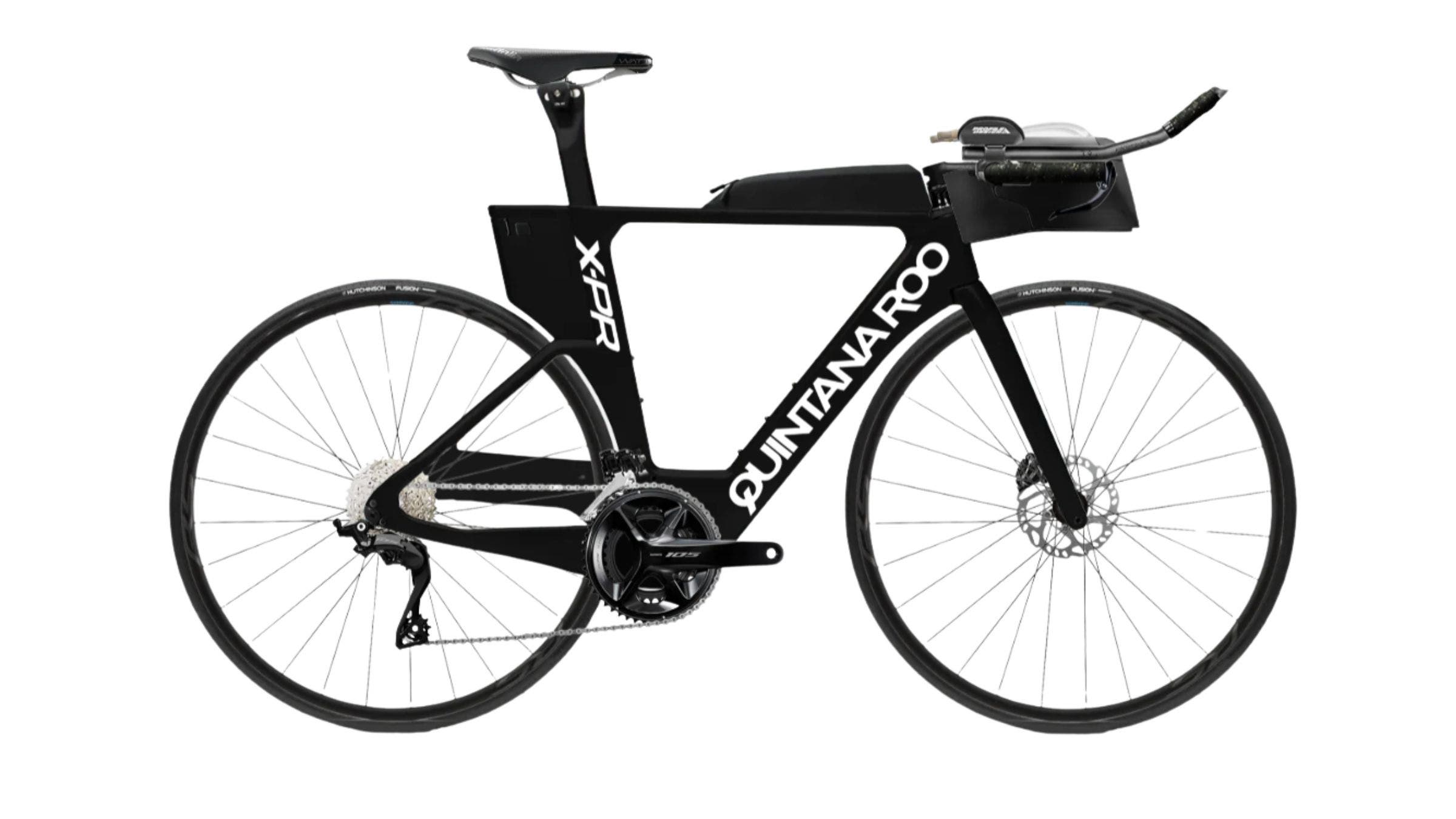
Quintana Roo’s X-PR is another great example of a bike that benefits from its bigger “siblings’” tech: The X-PR has the same aero gains, the same (amazing) handling, the same customization, and the same customer service as Quintana Roo’s flagship V-PR – for less than half the price to start. While the build is fine for under $5,000 – 11 speed and disc brakes, both mechanical – it won’t exactly beat out its competition.
Where it does stand out, however, is in the way you can customize your build (and colors) and how ready-to-ride the bike arrives at your door. We were also huge fans of the wide range of sizes (six) and the comfortable ride that makes this an easy choice, even for iron-distance racing. Though it doesn’t have built-in hydration – and only one bike does at this price point – QR lets you pair it with an XLAB Torpedo Versa 500 or a Profile Design Aeria optimized between-the-arms system so it’s ready to race right out of the box.
Read our full Quintana Roo X-PR review here.
A2 Bikes SP 1.1
Quick spec highlights: Shimano 105 11-speed mix, mechanical disc brake
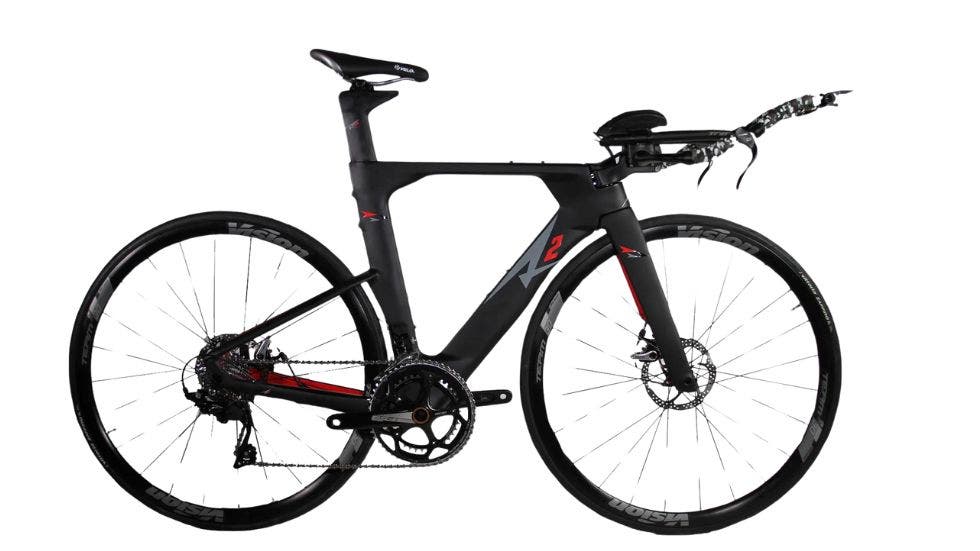
A2 Bikes was one of the original pioneers when it came to direct-to-consumer bike sales. With the introduction of its first excellent budget-priced carbon bike, the Speed Phreak, A2 became synonymous with cutting out the middleman to get a really great bike for less.
In the years since, A2 brought on a former head Cervelo engineer to design their all-disc SP line, and though you can’t find an A2 bike for under $2,000 anymore, the new SP 1.1 is still a killer mechanical disc setup for around $3,500 with far better fit options and aerodynamics than the original.
Read our full A2 SP1.2 review here.
Cervelo P-Series (2024 Version)
Quick spec highlights: Shimano 105 12-speed mix, hydraulic disc brakes, Reserve 40/44 carbon wheels, 4iiii Precision power meter
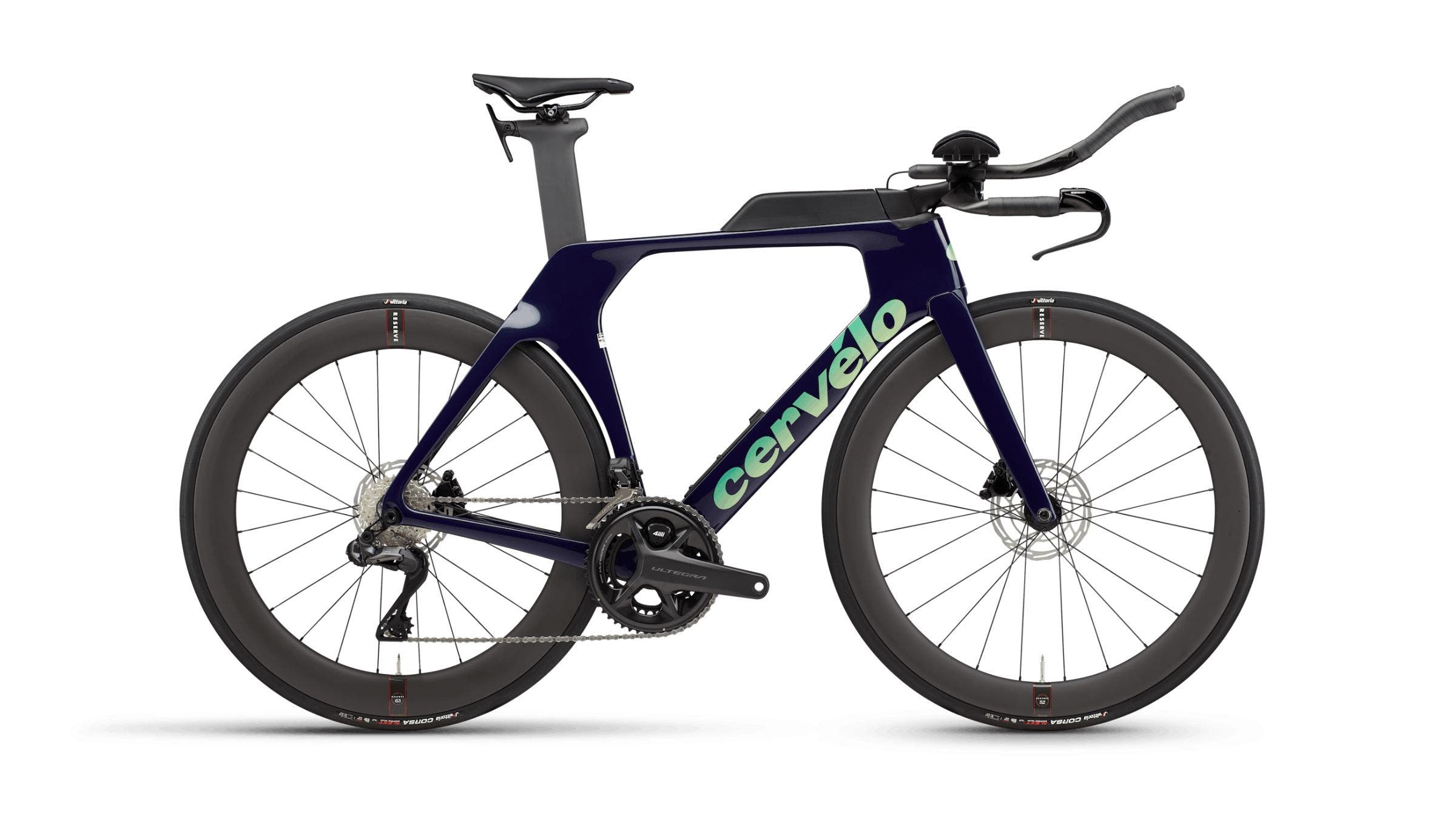
Boasting the lineage of the Cervelo P2 – one of multisport’s most beloved entry-level tri bikes – the latest, 2024 version of the Cervelo P-Series has more than a few updates from the version of the P-Series released over four years prior. First, the 2024 P-Series borrows nearly all of its design (and aerodynamic) cues from the 2024 version of the Cervelo P5 without the ultra-steep price tag.
The seat tube/top tube/seat stay junction is smoother and more in line with Cervelo’s popular S5 road bike, and most notably, the new P-Series boasts internal downtube storage – though it does prevent the use of the aero water bottle that came stock on the old P-Series and new (and old) P5. With six sizes available and a plethora of front-end fit flexibility, the P-Series could be the best overall bike when it comes to fitting the rider perfectly (which is worth its weight in gold), and balanced response with very tight handling.
Spec-wise, the 2024 P-Series is effectively ready-to-race out of the box, as the 40mm/44mm carbon wheelset is a good choice for most conditions and the included 4iiii Precision power meter is a great addition. Sadly, Cervelo increased the base price of the P-Series by $1,000 from 2024 to 2025, putting this bike a little out of reach for some, but still making it a solid choice in the $5,000 range.
Read our full 2024 Cervelo P-Series review here.
Dimond Carbonado
Quick spec highlights: Full Shimano 105 1 x 11-speed (note: no front derailleur), rim brake
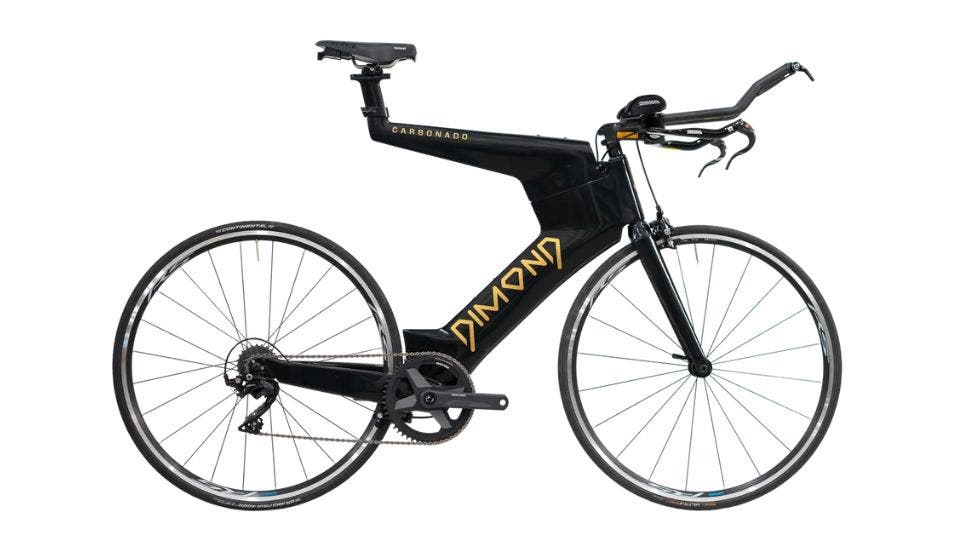
The Carbonado is aero at all costs – and it’s also the only non-double-diamond complete bike available for under $4,000 in 2025. Using a slightly different beam bike design as opposed to Ventum’s missing downtube setup on the pricier One, the Carbonado eats up bumps and provides a smoother ride in the rear than almost all bikes in this price range. While the front end is unsurprisingly rougher than the Z, the Carbonado handles better – though it also lacks the built-in hydration of its non-double-diamond competitor.
Also: Be aware that at this budget price/build, the Carbonado has no front derailleur and only shifts 11 speeds, compared to every other tri bike in this list that shifts either 22 or 24; it’s also the only bike on this list with rim brakes instead of disc brakes, so your choices for race-day wheel upgrades might become limited in the future.
Read more about the Dimond Carbonado here.
Obed RVR
Quick spec highlights: Full Shimano 105 12-speed, hydraulic disc brake
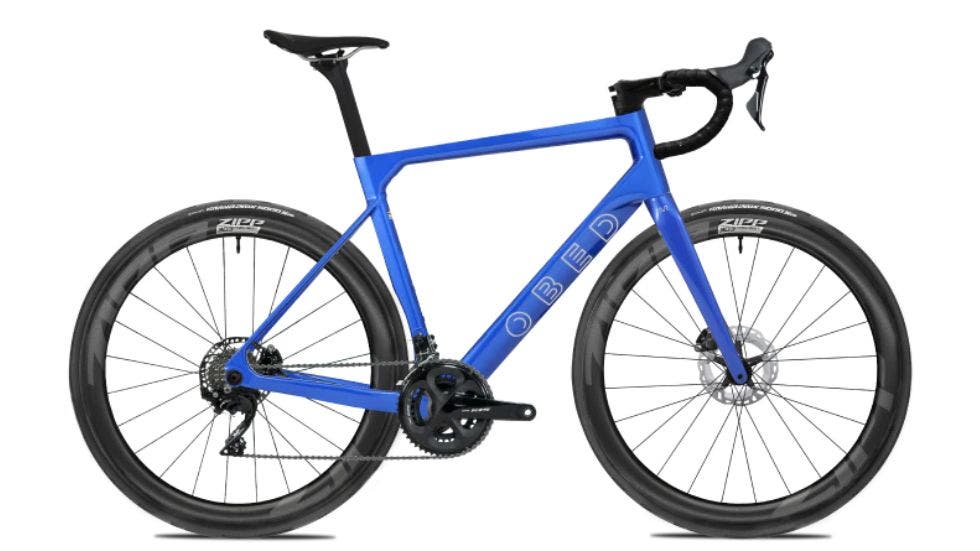
OK, you might be asking: What is a road bike (and an admittedly “non-racey” one) doing in our best beginner triathlon bikes list? Well, the reality is that many beginner triathletes don’t want or need a dedicated triathlon bike – depending on their goals.
For some, a relaxed-fit, high-stack “endurance road” bike, like the Obed RVR, is the right choice. Slap a pair of aerobars on it, and you’ve got something that’ll work for most any distance; slap on some knobby tires (up to 35mm), and you’ve got yourself a fully capable gravel bike for light trails and unpaved roads. We like the stability of the carbon-framed RVR and the fact that the build is basically complete with no corners cut for $3,000.
Best beginner triathlon bikes: Comparison chart
| Felt IAx | Canyon Speedmax CF7 | Quintana Roo X-PR | A2 Bikes SP 1.1 | 2024 Cervelo P-Series | Dimond Carbonado | Obed RVR | |
| Base Price | $3,700 | $5,200 | $4,400 | $3,400 | $5,000 | $3,500 | $3,000 |
| Base Build | Full Shimano 105 12-speed | Full Shimano 105 11-speed | Full Shimano Ultegra 11-speed | Shimano 105 11-speed mix | Shimano 105 12-speed mix | Full Shimano 105 1 x 11-speed | Full Shimano 105 12-speed |
| Base Brakes | Hydraulic Disc | Hydraulic Disc | Mechanical Disc | Mechanical Disc | Hydraulic Disc | Rim Brake | Hydraulic Disc |
| Base Wheels | Devox WheelRDS.A1 Aluminum | Reynolds AR58/62 DB Carbon | Shimano RS171 Aluminum | Vision Team 30 Aluminum | Reserve 40/44 Carbon | Shimano WH-RS171 Aluminum | Boyd Rouleur Aluminum |
| Sizes | 5 | 5 | 6 | 4 | 6 | 5 | 5 |